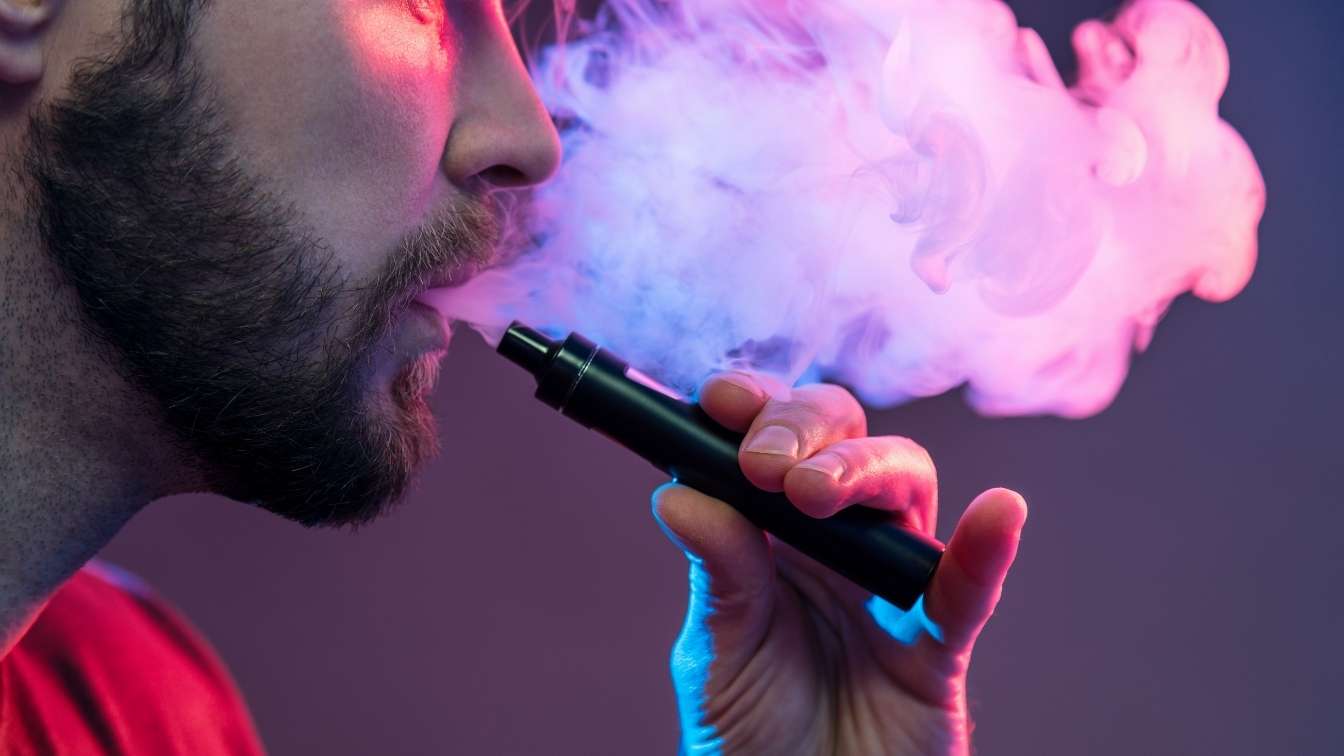The E-cigarette Bomb

Not a week goes by without more link-ups between sport & culture venues/promoters and e-cigarette brands. Some months ago it was the O2 Arena in London who were adopting an e-cigarette sponsorship deal which would see free samples of nicotine (let’s not forget – it’s one of the most highly addictive drugs known to mankind) handed out to people (let’s be honest – it’ll be mostly youngsters) attending events at one of London’s leading music venues. Then it was the great Glasgow Celtic Football Club doing the same. Shortly afterwards Glasgow Rangers Football Club followed suit. E-cigarettes are being promoted mercilessly across the world and not a whisper of concern appears to have been raised (beyond the pages of this blog).
Everyone loves the idea of e-cigarettes…the allure of diminishing the carnage that nicotine ravages on society’s smokers is intoxicating. But it appears that ‘The Emperor’s New Clothes’ moment is upon us as a new study in The Lancet was released in the face of deafening silence from those who believed the hype.
I’m delighted to introduce Damian O’Hara, one of the most senior & respected Allen Carr’s Easyway Therapists in the world, who comments in details as follows:
When they were first launched in 2004, e-cigarettes were touted by their manufacturers as the biggest public health contribution since penicillin. Every year smoking kills around 4 million people, and as smoking rates continue to rise in developing countries, that figure is set to grow. The World Health Organisation estimates that tobacco will kill 1 billion people this century. But what kills them is not nicotine, the raison d’être for smoking: it’s the tar and dozens of carcinogens that are also contained in tobacco smoke. E-cigarettes deliver the nicotine, but without these dangerous chemicals – although little is known of the harm that long term use of nicotine in the form of e-cigarettes may cause to users. In spite of this – millions of lives will be saved, they said. Smoking-related death and disease will be a thing of the past, they said.
E-cigarettes – despite their lack of safety testing and regulation – were cautiously embraced by many public health professionals as a potentially critical harm reduction product. Who cares if people are still addicted to nicotine, so long as they aren’t getting sick? Whilst at Allen Carr we know that any smoker can find quitting easy and enjoyable, it is a reality that some smokers who continue to use less effective methods, can’t or won’t stop. Smoking will kill half of such smokers, but that’s not all: for every smoking-related death, there are twenty cases of a quality-of-life sapping smoking-related disease.
E-cigarettes promised a stunning turnaround. Millions of lives saved, countless millions of lives improved, billions saved on healthcare costs treating smoking-related morbidity…it almost seemed too good to be true. Because it was.
Recently the highly-respected medical publication, The Lancet, published the first high quality randomised, controlled trial looking at smokers quitting by transferring to e-cigarettes. The study followed three groups: one given the 21mg nicotine patch, one the e-cigarette with 16mg nicotine cartridges, and one the e-cigarette with placebo (i.e. no nicotine) cartridges. The main outcome of the study was smoking abstinence at six months.
As we have come to expect from the nicotine patch, the results were poor. Just 5.8% smokers were able to quit using the patch at six months. This figure tallies with the success rates from countless other studies and once again raises the question; why does a treatment with a 94% failure rate at six months form the backbone of every government cessation strategy?
What was many times more disappointing though was that the success rate for the e-cigarette group was a meagre 7.3%. The whole point of e-cigarettes is that they are supposed to be a real alternative to smoking. In addition to the e-cigarette delivering the smoker’s drug, it is also supposed to deliver a ‘smoking experience’. Smokers, the rationale went, would switch to the e-cigarette in their millions because they could get all the ‘pleasure’ of smoking, with no health risk whatsoever. This study effectively debunks that myth for good. If only 7.3% of smokers wanting to quit are able to do so using the e-cigarette then its potential as a public health contributor is no better than the nicotine gum. And to make matters worse, of the 7.3% who quit, nearly 40% of them were still using the e-cigarette. In reality, it turns out that smokers view e-cigarettes as no more than a way of getting their nicotine when they are temporarily not able to smoke.
And e-cigarette companies know this well. Despite their claims to be a cessation product, their marketing activities tell a different story. Today, we see the majority of e-cigarette advertising is aimed at two targets. Target one – luring former smokers back into the nicotine trap. How despicable is that? It’s like advertising vodka at Alcoholics Anonymous meetings. Target two – in an echo of tobacco marketers in days gone by – it takes aim at young people. E-cigarette companies now compete with tobacco and pharmaceutical companies for the nicotine-addicted market. And because they are unregulated, e-cigarette marketers are able to promote in ways that tobacco companies are not. No wonder tobacco companies are falling over themselves to buy into the business! Flavours like peanut butter, Red Bull, vanilla, gummy bear and candy floss have been developed. E-cigarette companies have started to advertise in teen publications and on websites aimed at young people. Music and sports venues are the new recruiting grounds for one of the most addictive drugs known to man. They make packs that look like iPhones. E-cigarette manufacturers have developed sophisticated social media campaigns to promote initiation among teens.
The success of this approach can be seen in another study released recently by the Centres for Disease Control which showed that e-cigarette use among middle and high school students DOUBLED in 2012 alone. Watch this space.
So the e-cigarette’s fall from grace is complete. In ten short years it has gone from being the next big thing in public health to just another ineffective product designed to keep people enslaved to a drug that doesn’t even get them high.
Immediate regulation of e-cigarettes is essential in order that they can be controlled properly and so that unscrupulous marketers can be stopped from designing and adapting this highly addictive product to appeal specifically to young people.

get started
Sign up for free advice, support and resources to start you on your quit smoking journey.



